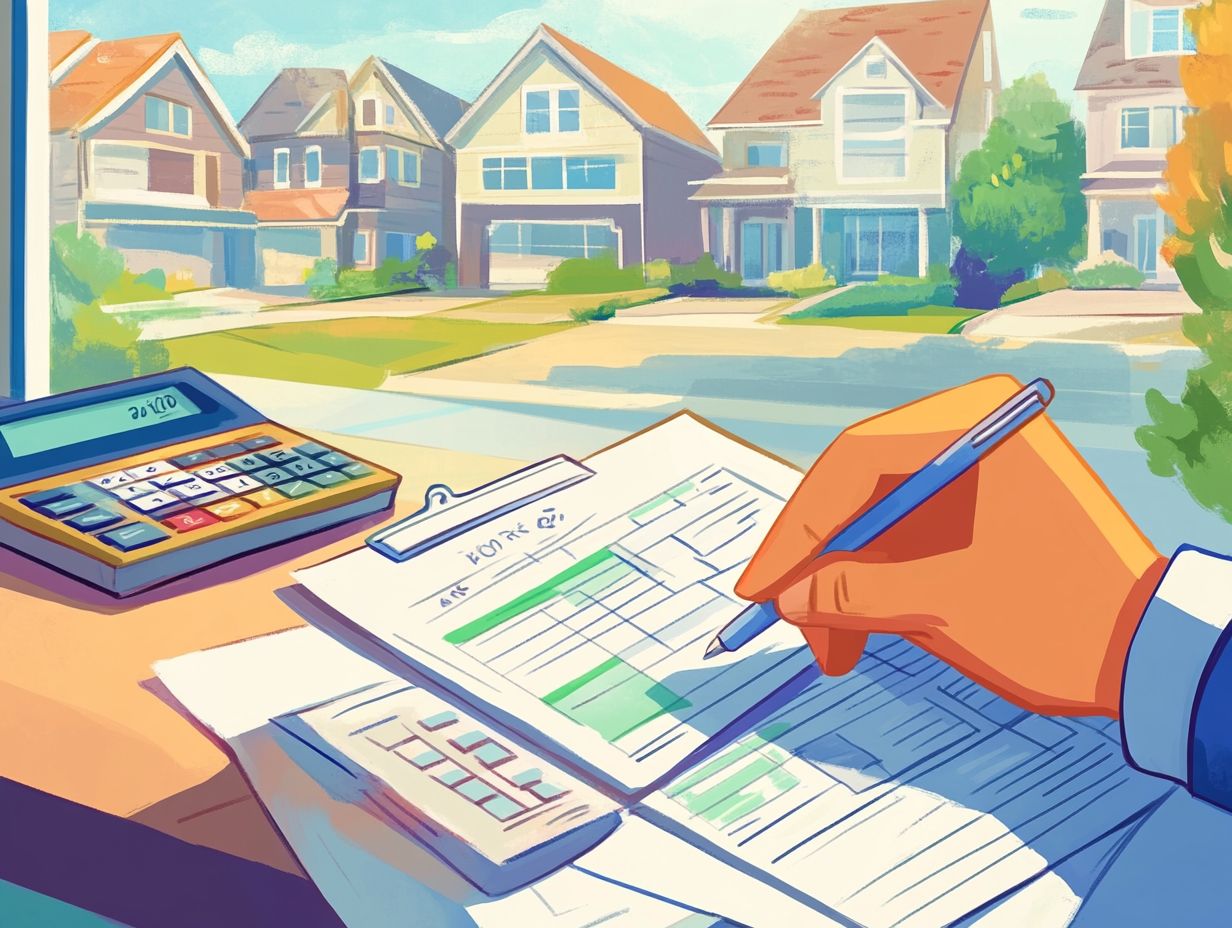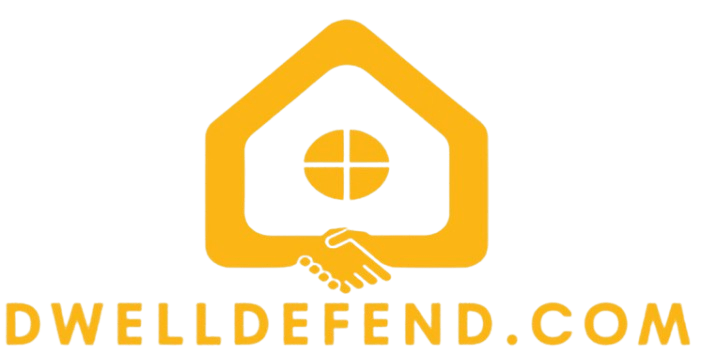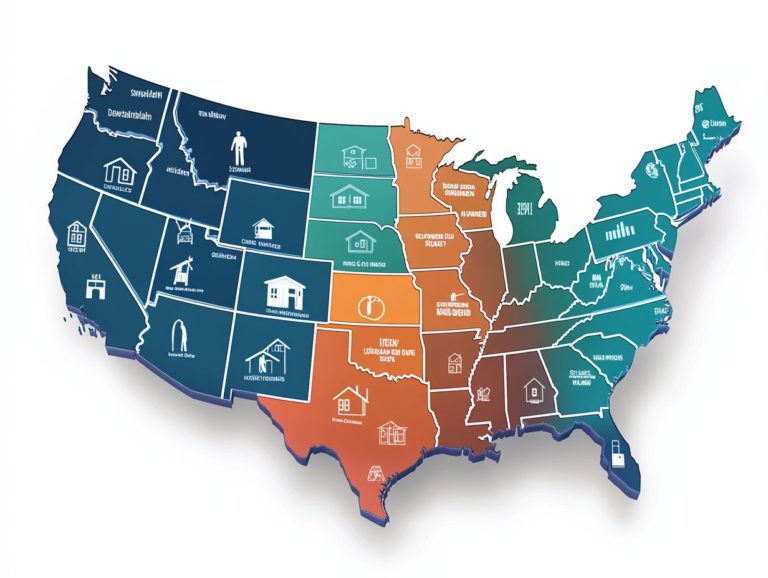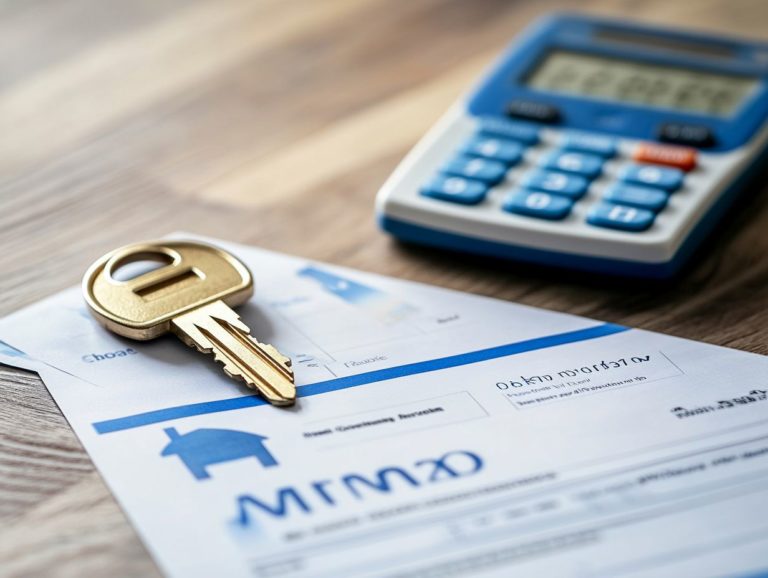What is the Home Insurance Underwriting Process?
Home insurance can be overwhelming. Understanding the underwriting process is key.
Underwriting is how insurance companies decide how much risk your home poses. It is important in determining your coverage and premium, reflecting the risks associated with your property and personal circumstances. Let s dive into what you need to know about underwriting!
You will also find tips for a smooth experience, empowering you to secure the best possible policy for your home.
Dive in to uncover more insights!
Contents
- Key Takeaways:
- Understanding Home Insurance Underwriting
- Factors that Affect Home Insurance Underwriting
- The Underwriting Process
- How Underwriting Determines Your Premium
- Tips for a Smooth Underwriting Process
- Frequently Asked Questions
- What is the Home Insurance Underwriting Process?
- How Does Underwriting Work?
- Who is Involved in the Home Insurance Underwriting Process?
- What Factors are Considered in the Home Insurance Underwriting Process?
- How Long Does the Home Insurance Underwriting Process Take?
- Can the Home Insurance Underwriting Process Affect My Premium?
Key Takeaways:

Home insurance underwriting evaluates risk factors to determine the right coverage and premiums for a policyholder. Personal and property information such as location, age of home, and claims history are key factors that affect underwriting decisions. To ensure a smooth underwriting process, policyholders should prepare for inspections and effectively communicate with underwriters to provide accurate information and address any concerns.
Understanding Home Insurance Underwriting
Understanding home insurance underwriting is essential for homeowners like you looking for the best coverage. This process involves a thorough risk assessment by insurance companies to determine your eligibility for coverage and set the right policy premiums.
Underwriters closely examine several factors, such as the condition of your home, your loss history, credit score, and safety features. This ensures that the insurance policies match the insurer s risk appetite.
By understanding insurance underwriting, you can navigate your options more easily and make informed decisions about your homeowners insurance.
What is Underwriting and Why Is It Important?
Underwriting is the process where insurers evaluate the risk of insuring a property or individual, determining both the terms and the cost of your insurance coverage.
This important process shapes the insurance landscape. It aligns the premiums you pay with the level of risk while protecting both you and the insurer from potential losses.
Insurers use specific guidelines that consider factors like your credit history, previous claims, and the overall condition of the property. By evaluating these elements, they can better assess the likelihood of a claim and tailor the coverage to meet your needs.
Factors that Affect Home Insurance Underwriting
Many factors play a crucial role in the underwriting process for home insurance, shaping the evaluation and determining the premium you will pay as a homeowner.
Understanding these elements empowers you to make informed decisions about your coverage.
Property Characteristics
Property characteristics are key in the underwriting process. Insurers assess various elements to calculate risk and establish coverage terms.
When evaluating a home, they consider the overall condition, including the age of the roof, plumbing state, and foundation integrity.
Detached structures like garages or sheds can also affect the evaluation, as they may introduce unique risks or require additional coverage. Insurers pay close attention to attractive nuisances, such as swimming pools or trampolines, which can lead to liabilities if not properly secured.
Each of these factors helps underwriters gauge risk levels, ultimately influencing the insurance premiums you will encounter as a homeowner.
Personal Information

Personal information, including your credit history and claims history, is crucial in the underwriting process. It significantly impacts your insurance score and policy premium. This information provides underwriters with essential insights into your risk profile. It allows them to evaluate the likelihood of future claims.
A clean claims history often results in lower premiums. In contrast, a pattern of frequent claims raises concerns, indicating a higher risk. Insurance scores, derived from credit data, help predict the probability of policyholders filing claims.
Your personal details directly affect underwriting decisions. Maintaining good credit and claims history is important.
Therefore, it’s evident that your personal information plays a vital role in determining your coverage eligibility and ensuring you receive fair pricing.
The Underwriting Process
The underwriting process consists of a careful series of steps that insurance providers undertake to evaluate applications.
This approach ensures a thorough risk assessment and accurate premium calculation tailored specifically for homeowners.
Step-by-Step Guide
A step-by-step guide reveals how your insurance applications are evaluated. This transforms risk assessment into the premium calculation you ll encounter.
Understanding this process is crucial for you as a policyholder. It starts with comprehensive data collection, including personal information such as your health history, occupation, and lifestyle choices.
Once the necessary information is gathered, underwriters conduct a detailed risk evaluation. They analyze your data against various risk factors and compare it to industry benchmarks. This phase is critical. It assesses the likelihood of claims and their potential costs.
After thoroughly assessing the risk, a decision is made regarding your application. This can lead to approval, modification of terms, or denial. Each outcome significantly influences the specific premium offered based on the perceived level of risk.
How Underwriting Determines Your Premium
Underwriting plays an important role in shaping your insurance premium. It involves a careful evaluation of various factors that assess the likelihood of claims and the associated risks.
Understanding these factors can empower you in managing your insurance costs effectively!
Calculating Risk and Setting Rates
Calculating risk and setting rates requires analyzing various data points to establish fair insurance premiums that align with underwriting standards. This process considers a wide array of factors, including historical claims data, geographical nuances, and the unique characteristics of each applicant.
You may find insurers employing simple models based on known facts, which provide a straightforward evaluation, and models that consider different possible outcomes.
These methodologies are crucial in determining how much you or your business should pay for coverage. They impact the overall financial stability of the insurer while ensuring you receive adequate protection.
Advanced analytics and machine learning techniques have become essential in refining these assessments. They enable more precise risk categorization and premium adjustments tailored to your specific needs.
Tips for a Smooth Underwriting Process

To achieve a seamless underwriting experience, homeowners must take the necessary steps to prepare for home inspections. Maintaining open lines of communication with their insurance agents during the application process is also crucial.
This proactive approach not only facilitates a smoother journey but also gives you the power to navigate any potential challenges with confidence.
- Prepare documentation ahead of time.
- Maintain transparency with your insurer.
- Stay organized and follow up on requests.
Preparing for Inspections and Evaluations
Preparing for home inspections and evaluations is crucial for ensuring a seamless underwriting process and achieving accurate property assessments.
Start by taking a comprehensive walkthrough of your property. Pay special attention to critical areas like the roof, plumbing, and electrical systems.
Highlight safety features, such as smoke detectors and carbon monoxide alarms, to elevate the appeal of your home. Addressing minor repairs think leaky faucets or damaged tiles demonstrates that your property has been well maintained.
Declutter now to impress your inspectors! Creating an inviting sense of openness and safety will make their evaluations smoother.
A thorough professional cleaning can leave a lasting impression, showcasing that your home has been cared for and is in top-notch condition for assessment.
Communicating with Underwriters
Effective communication with underwriters and insurance agents is pivotal during the underwriting review period. It helps clarify uncertainties and expedite the entire process.
By keeping those lines of communication open, you ensure that everyone is aligned, significantly reducing the chances of misunderstandings. Underwriters value timely responses to their requests for additional information. This not only accelerates the decision-making process but also builds trust.
Sharing relevant details transparently can enhance collaboration, making the underwriting experience much smoother. When you prioritize these best practices, you set yourself up for more favorable outcomes, underscoring the vital role of effective communication in the insurance landscape.
Frequently Asked Questions
What is the Home Insurance Underwriting Process?
The Home Insurance Underwriting Process is the evaluation of a potential customer’s risk factors, including their property, location, and claims history, to determine the appropriate coverage and premium for their home insurance policy. To understand more about this process, check out the role of underwriting in home insurance.
How Does Underwriting Work?

The Home Insurance Underwriting Process involves collecting information from the policyholder through an application, checking the risks involved, and then determining the coverage and premium based on that assessment.
Who is Involved in the Home Insurance Underwriting Process?
The Home Insurance Underwriting Process involves the insurance company’s underwriting department, responsible for evaluating the risk and determining the policy terms, as well as the policyholder, who provides information about their property and needs.
What Factors are Considered in the Home Insurance Underwriting Process?
The Home Insurance Underwriting Process takes into account various factors such as the property’s location, age, and condition, the policyholder’s claims history, and the desired coverage and out-of-pocket expenses before insurance kicks in.
How Long Does the Home Insurance Underwriting Process Take?
The length of the Home Insurance Underwriting Process can vary depending on the complexity of the property and the information provided by the policyholder. It can take anywhere from a few days to a few weeks.
Can the Home Insurance Underwriting Process Affect My Premium?
Yes, the Home Insurance Underwriting Process can affect your premium as it takes into account the level of risk associated with your property. If the underwriting determines that your property is high risk, you may end up with a higher premium.
Ready to get started with your home insurance? Contact us today!





